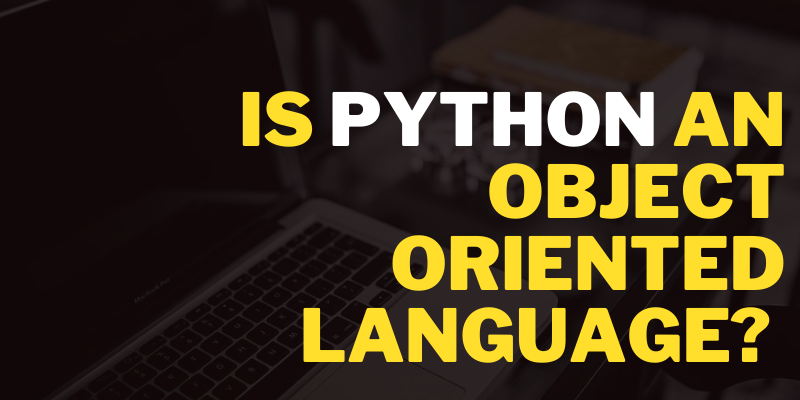
Whether Python is an Object-oriented Programming language has always been a point of contention among programmers. Today, we’re trying to come up with an acceptable solution to put an end to the discussion.
However, before we can make a definitive judgement on what kind of programming language Python is, we must first define an OOP language.
What exactly is object-oriented programming (OOP) and how does it function?
Object-oriented programming (OOP) is a programming language in which programmers/developers define the data types, data structures, and functions that may be applied directly to the data structures. As a result, data structures become “objects,” which contain both data and functions. Rather than logic and functions, object-oriented programming (OOP) organises and structures programmes around objects. This is in contrast to the traditional programming method, which concentrates on the logic itself rather than the data it contains.
An object is a self-contained entity that includes data as well as the methods needed to manipulate it. In layman’s terms, it refers to a data field with distinct features and behaviour. As a result, the OOP paradigm works by interacting with and calling the properties of the various objects. With our Python Training in Chennai, you can learn more about Python programming language.
The following are the fundamental principles and characteristics of object-oriented programming:
A class is an object’s blueprint or outline that defines the properties and functions that hold the data’s real functionality. “Members” are the names given to these characteristics and methods. While declaring the members, you can access them using the defined access modifiers.
Inheritance
Inheritance refers to the relationships and subclasses that exist between many objects, allowing programmers to reuse similar logic while keeping a clear hierarchy. By decreasing code repetition, the data is cleaned, converted, and visualised in this process, allowing for a more thorough and accurate data analysis. Python Online Course will enhance your technical skills in Python programming language.
Encapsulation
The technique of juxtaposing diverse pieces to create a unique creature is known as encapsulation. During this procedure, each object’s implementation and state are kept private within a defined class, preventing other objects from changing the class – they can only declare a list of public functions. Data encapsulation, also known as data hiding, improves code security while also preventing data corruption.
Abstraction
Abstraction is the technique of masking the implementation of functionalities and exposing only the interfaces or accessing methods needed to trigger the implementation class’s methods. To put it another way, the objects only emit information that is useful to other objects.
Polymorphism
Polymorphism is the process through which items can take on various forms depending on the demands of the situation, as the name suggests. It identifies the usage or meaning that is necessary for each execution of that object, eliminating the need for duplicate code. The two polymorphism approaches are method overloading and method overriding.
Is Python an Object-Oriented Language?
To be honest, we can’t really call Python an object-oriented programming language. It is a high-level, multi-paradigm programming language that incorporates the features of both object-oriented programming and aspect-oriented programming. It is functional, procedural, imperative, and reflective at the same time, while borrowing substantially from the OOP language. That’s because it’s significantly influenced by JavaScript, CoffeeScript, Ruby, Swift, Groovy, and Go, among others.
OOP languages include Java, Objective C, C++, Ruby, Smalltalk, Visual Basic .NET, Simula, and JavaScript, to name a few. Python, like any other OOP language, makes use of OOP fundamentals. Class, for example, has the same meaning in Python as it does in other OOP languages. The inheritance mechanism of OOP is also preserved in Python. Furthermore, Python can be used with other OOP languages such as Java to create apps that combine the functionality of both languages, and you may call both languages within each other to properly execute the programme.
Conclusion:
Here, in this blog we have discussed about is python an object oriented language? and to know more about what is oops in python and Advantages of Python, join Python Training in Coimbatore at FITA Academy.